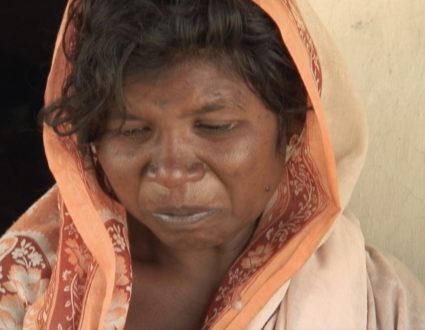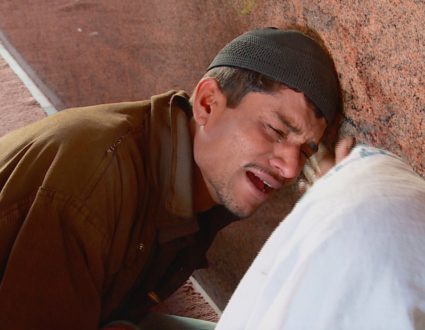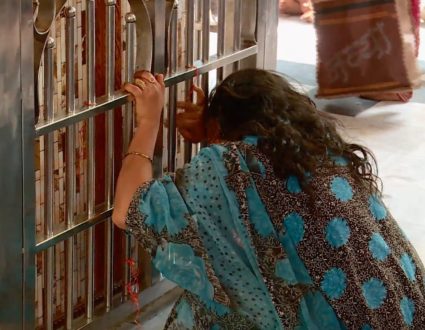- Amna Nawaz:In recent years, the prevalence of autism has risen significantly across all populations in the U.S.Diagnoses are more common among children of color, but one group, Somali Americans, is seeing an alarming increase.Fred De Sam Lazaro has this report from Minnesota, home to the largest Somali community in America.
- Anisa Hagi-Mohamed, Parent Activist:I have three children, two girls and a boy. And they have all been diagnosed autistic. Two of my children are verbal. One is partially verbal. And we speak, eat, sleep autism.
- Fred De Sam Lazaro:For Anisa Hagi-Mohamed and husband Duraan Ali (ph), this is one of few outings the family does together in a routine otherwise individually tailored for their 8-, 6-, and 3-year-old children.On Sundays, the kids get to play in a safe space, set aside just for autistic children. Hagi-Mohamed was a teacher. She has a degree in linguistics, but has devoted her life to advocating for autistic children in the Somali American community.
- Anisa Hagi-Mohamed:I always tell parents you are going to face a period of denial. I experienced it myself, even though my daughter was showing very visible signs of autism. She was refusing affection. She had different behaviors.
- Fred De Sam Lazaro:Autism is a brain development disability whose symptoms can range across a wide spectrum of severity, with repetitive speech and behaviors and verbal and social skills.Many public figures have confirmed themselves or been described as autistic, scientists and tech leaders like Albert Einstein and Elon Musk and the climate activist Greta Thunberg. But up to 40 percent of people on the spectrum have intellectual disabilities, lack basic life skills, and require lifelong care.
- Abyan Bashir, Psychologist:All parents are going to have a challenge when they have a child with disability, because what it involves is mourning the futures, the thoughts, the dreams related to what that child’s life trajectory is.
- Fred De Sam Lazaro:But for immigrant patients and their families, Dr. Abyan Bashir says, there are other hurdles.The first challenge is finding care providers. Although their number has increased in recent years, Bashir is one of very few Somali Americans in the field where cultural background really matters, she says.
- Abyan Bashir:What I offer to them is familiarity and understanding the diagnosis in and of itself and allowing them to grieve that in a way that doesn’t stigmatize that or makes them feel bad. It’s like, yes, that happens and it’s OK.
- Fred De Sam Lazaro:Autism is not widely understood in the Somali community, even though its become alarmingly prevalent.Jennifer Hall-Lande, Minnesota Autism and Developmental Disabilities Monitoring Network: Overall rates in our 4-year-olds of one in 53. And what we were seeing in our Somali 4-year-olds were rates of one in 16.
- Fred De Sam Lazaro:That is astounding, isn’t it?University of Minnesota research scholars Amy Esler and Jennifer Hall-Lande are part of a Centers for Disease Control autism survey tracking the national rise in diagnoses in recent years. They were approached by alarmed parents to tease out specific prevalence in Minnesota’s Somali community.Amy Esler, Minnesota Autism and Developmental Disabilities Monitoring Network: I’m glad that we were able to provide some confirmation on what parents have been talking about for over 10 years now. And, hopefully, this helps influence policy.
- Fred De Sam Lazaro:What they cannot answer is why autism so prevalent in the local Somali community, where they also found higher rates of intellectual disability than in the general population.
- Amy Esler:Literally, hundreds of genes have been identified that are linked with autism. So, knowing how to predict autism ahead of time, we’re not there yet, having a biomarker for autism, we’re not there yet either. There may be an environmental component, but were very much in the early stages of learning what those environmental components might be.
- Fred De Sam Lazaro:It’s not only the science that’s lacking, but these parents said it’s also support from a system that’s under-resourced, foreign to them, even hostile.Faduma Ismail recalled taking her then-2-year-old daughter in because she’s begun to withdraw emotionally and stopped eating, hallmark autism symptoms. But, she said, the doctor brushed her off.Faduma Ismail, Mother of Child With Autism: And she said: “Oh, Somali people, you guys like fat kids, chubby kids. Your daughter, she’s fine.” I say, no, because 100 percent I’m sure something is wrong. So they took some blood and blood tests, and they call me before even I go home.
- Fred De Sam Lazaro:She was summoned back because the tests revealed severe malnutrition. She received packets of high-calorie nutrition supplements and a home visit.
- Faduma Ismail:After two days, there is a lady come and visiting my house.
- Fred De Sam Lazaro:It was a social worker, as activist Idil Abdull noted.
- Idil Abdull, Parent Activist:The doctor who was supposed to help you, not only did she not help you, but she reported you to child protective services, so that you can lose the child.
- Fred De Sam Lazaro:The social worker found no issue, she says, apologized and left.
- Idil Abdull:I’m just — I am baffled to hear the lack of human decency from the system.
- Fred De Sam Lazaro:Until the Affordable Care Act mandated it, few insurers covered autism care. Minnesota’s Medicaid program began coverage in 2018, and while that brought in more providers, there’s still a long wait to see one for an official diagnosis and then more waiting as applications are processed for services and state assistance.Najma Siyad, Mother of Child With Autism: I have a 4-year-old son on the spectrum. Officially, he got diagnosed when he was 2, and he didn’t receive any early intervention until he was 3.5.
- Fred De Sam Lazaro:The delay in early intervention compounds problems later in life and may in part explain the higher incidence of intellectual disability among Somali children.
- Jennifer Hall-Lande:The earlier we intervene with children with autism the better their life outcomes, the better their functioning is in terms of communication, intellectual ability, motor.
- Fred De Sam Lazaro:In a statement, Minnesota human services officials blamed work force shortages and heavy demand for the long wait times. And there’s another reason for delayed intervention, and it starts at home.Mahdi Warsama, Somali Parents Autism Network, There are a lot of misconceptions about autism itself within the community.
- Fred De Sam Lazaro:Mahdi Warsama heads the Somali Parents Autism Network, which works in trusted spaces like mosques to encourage acceptance of mental disabilities.
- Mahdi Warsama:Some parents, unfortunately, don’t want anybody to know that they have a child with autism. They hide the child from the public. The child is going to miss a lot of developmental milestones and opportunities.
- Fred De Sam Lazaro:There are stories of progress in the parents group.Mona Loyan, Mother of Child With Autism: The apple of my eye was born as an autistic. We did find out very early age. I’m extremely lucky. Thank God he is an amazing kid. He talks. He walks. He is in college.
- Woman:When she first came, you remember.
- Anisa Hagi-Mohamed:She came in banging her head.
- Fred De Sam Lazaro:For many parents, like Anisa Hagi-Mohamed, progress is measured in small victories, like getting from intense head-banging to calm therapy sessions.She also senses growing openness in the community to now talk about autism, beginning recently with giving the condition a name in Somali.
- Anisa Hagi-Mohamed:Maangaar, which is unique mind. We’re giving a positive word to autism. Like, it’s not this big scary thing.
- Fred De Sam Lazaro:But one that will remain a daunting challenge at many levels for years to come.For the “PBS News Hour,” I’m Fred De Sam Lazaro in Minneapolis.
- Amna Nawaz:And Fred’s reporting is a partnership with the Under-Told Stories Project at the University of St. Thomas in Minnesota.
An unanswered question
Why do 1 in 16 somali american 4-year-olds have autism?
The prevalence of autism has risen significantly across all populations in the U.S. in recent years and diagnoses are more common among children of color. One group is seeing an alarming and yet unexplained prevalence. In this story, we report from Minnesota where the Somali American community is struggling to understand and cope with the disorder.








